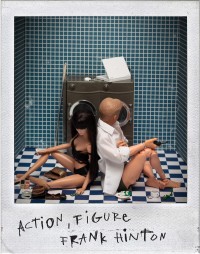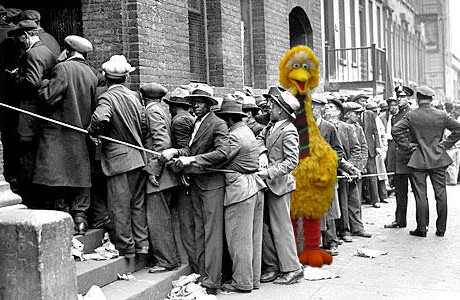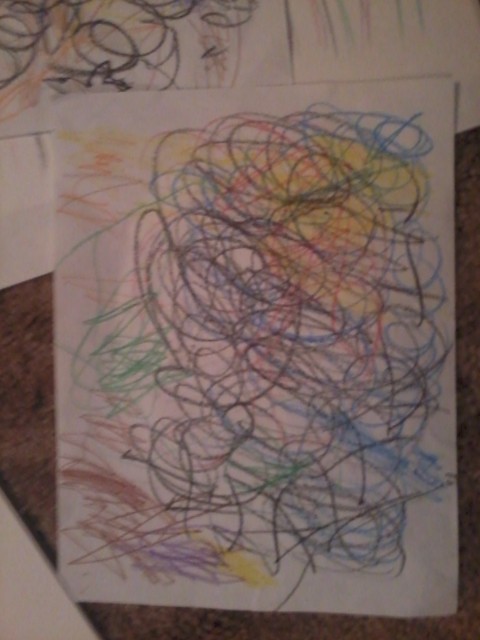DIED: Edward Archbold

On October 5, Edward Archbold, 32, won a live roach-eating contest at a pet store north of Miami, Florida. After his win, Mr. Archbold felt ill, began vomiting, and was taken to a hospital where he was pronounced dead. Other participants in the contest did not fall ill and did not die, suggesting that his death might have been unrelated to the large number of live cockroaches he consumed. Or at least that, for the larger percentage of us, the consumption of a lot of cockroaches is not necessarily dangerous. READ MORE >
How Not to Think: A Few Words
 A year ago I was in Germany, alone and growing a beard—the only beard I’d ever had or since—for questionable and seemingly unironic reasons. I felt some prejudice, especially at the doors of clubs, of which I saw several facades but never an interior. I experienced some new forms of illness, peed on myself in a cab and bought an €11 plane ticket to Norway. I felt lost and rarely thought of death, and now my life has leveled out a bit. I live with my girlfriend and signed my first official lease on part of the second floor of a two-story house. I cook and drink American beers, plan my weeks around the presidential debates. Compulsive paranoia regarding the suspect preparation of cappuccinos has been replaced with making sure my clothes are off the couch and bills are paid. New fixations, too, have arisen: to map the narratives of my amaranthine nightmares, to parse the patterns of diffuse images of terror and decay that drift throughout my consciousness, to grapple with religion, God, the transmutation of the body and the limits of the human mind, the actual capacity of the thing and the shape of its components. Lately a vague sensation of erosion has begun to worm its way into my cognizant perception—a knowledge of mental illness, colors swaying into a kind of one color, that which contains every color and/or imageable, magmatic structure.
A year ago I was in Germany, alone and growing a beard—the only beard I’d ever had or since—for questionable and seemingly unironic reasons. I felt some prejudice, especially at the doors of clubs, of which I saw several facades but never an interior. I experienced some new forms of illness, peed on myself in a cab and bought an €11 plane ticket to Norway. I felt lost and rarely thought of death, and now my life has leveled out a bit. I live with my girlfriend and signed my first official lease on part of the second floor of a two-story house. I cook and drink American beers, plan my weeks around the presidential debates. Compulsive paranoia regarding the suspect preparation of cappuccinos has been replaced with making sure my clothes are off the couch and bills are paid. New fixations, too, have arisen: to map the narratives of my amaranthine nightmares, to parse the patterns of diffuse images of terror and decay that drift throughout my consciousness, to grapple with religion, God, the transmutation of the body and the limits of the human mind, the actual capacity of the thing and the shape of its components. Lately a vague sensation of erosion has begun to worm its way into my cognizant perception—a knowledge of mental illness, colors swaying into a kind of one color, that which contains every color and/or imageable, magmatic structure.
Action, Figure
Action, Figure
by Frank Hinton
Tiny Hardcore Press, 2012
160 pages / $16.95 (paperback) $10.00 (ebook) buy from THP
Rating: 9.0
“I want my childhood back,” Lili states. This may be the heart of the book. Aging is terrible. A curse is associated with accumulating years. One realizes youth wasn’t wasted enough. With the sheer passage of time it becomes obvious life is not based on success. Characters in this book want to live. Success is a by-product of life, not the goal. Searches here involve the mundaneness of looking for work, of pleasing parents, and the surreal journey through bombed-out lonely streets to seek others to complete us.
October 9th, 2012 / 1:05 pm
HEATH COURSE PAK by Tan Lin
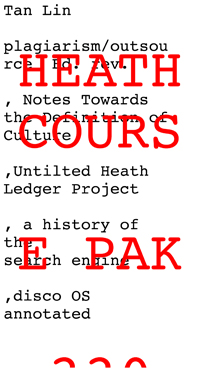 HEATH COURSE PAK
HEATH COURSE PAK
by Tan Lin
Counterpath Press, 2011
120 pages / $17.95 Buy from SPD or Amazon
In HEATH COURSE PAK Tan Lin continues his exploration of the ambient novel, focusing on the idea of how a book works and how a reader reacts to a book (literally a printed object) when its content bears no direct progression from A to B and instead offers tangential and obliquely-linked plagiarisms, outsourced ephemera, and meta-content.
Without a vague curiousity towards the book as an object, and how the book as an object works, there is little of interest here–this is a mass-produced artists’ book, battling with the world of conceptualism, occasionally tittering into poetry via the banality of its content (this is not surprisingly as Lin himself ‘began,’ shall we say, as a slightly-more straight-forward poet). It’s certainly interesting in theory, but in practice there’s no way to avoid the fact that reading the book, in the way one reads a traditional novel, is boring.
But, perhaps that’s a moot point. Lin’s intent seems to be related to, as he explains in an interview both in the book and in interviews various places over the internet, an interest in developing an ambient novel, in the way that Eno accidentally created an entire genre of music by releasing Music for Airports (though this in itself is also an arguable point, it draws an interesting point of comparison– Eno’s ambience still carried a significantly melodic mode, perhaps we could insist that ‘melody’ in music is ‘narrative’ in The Book–there is no melody in Tan Lin’s work, unless we stretch the metaphor to extend towards serial music, perhaps we can find something).
The book is interesting in that it’s specifically not interesting, it’s successful because of the way it fails, it succeeds so adequetely at what it sets out to do that as a book it becomes a mere chore, an exercise. But the stamina required is beautiful, and Lin’s trajectory through the world of literature, as an outlier questioning things completely different than anybody else, is entirely necessary.
October 9th, 2012 / 12:00 pm
Reviews Section Update: 25 Points
HTMLGiant is now accepting submissions for a new category of book review. “25 Points” will feature reviews consisting of numbered series: 25 facts and/or opinions about a single work. Tangential list items, variations of length, and other deviations are encouraged. Reviews and queries can be sent to brooks [at] htmlgiant [dot] com.
On Bobbie Louise Hawkins
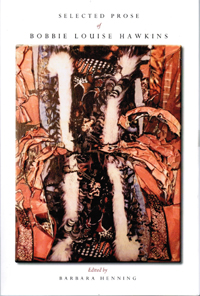 Selected Prose of Bobbie Louise Hawkins
Selected Prose of Bobbie Louise Hawkins
Edited by Barbara Henning
BlazeVOX Books, 2012
391 pages / $18 Buy from BlazeVOX or Amazon
&
Fifteen Poems
By Bobbie Louise Hawkins
Belladonna, 2012
51 pages / $12 Buy from Belladonna
Bobbie Louise Hawkins writes some enlivening good times prose. Her writing skirts the not so fine line between fiction and non-fiction. Often composed in the form of short vignettes and based on either a story she’s been told or off events she’s herself experienced, nothing Hawkins writes is ever just made up. It all more or less happened somewhere to somebody and that’s much of what’s so endlessly charming about her work. It matters. It sticks to your guts like a good meal should. This is necessary news about living:
One evening when Velma and I were kids and were playing in the half dark of the front porch it started to look as if there was some big fire in the far distance. The sky glowed red and the glow became larger until it took up half the sky in that direction. And in the wake of the colour rose an enormous full orange moon. Texas full moons have the gift of being seen the instant they surface.
Stand in a perfect half circle. The far line of the horizon is exactly horizontal. That line extends as far as you can see, left or right. Below that line is one colour, above it is another colour. You are standing on the exact line of it. Your feet are on the earth and your head is in the air. Roughly speaking you are a 90° vertical line. You are a definite addition to the landscape, that is you are holding down that piece of ground and you’re human.
(“From Abilene to Lubbock…”)
October 8th, 2012 / 12:00 pm
Is Cormac McCarthy the rural Don DeLillo or is Don DeLillo the urban Cormac McCarthy?


